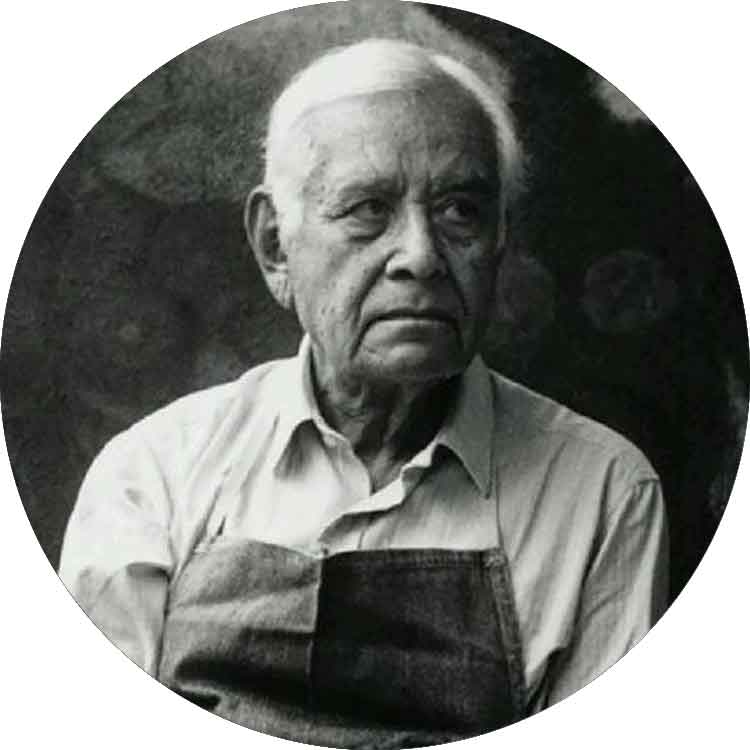Rufino Tamayo, born in Oaxaca de Juárez on August 25, 1899, was a Mexican painter and engraver. After becoming an orphan in 1911, he moved to Mexico City, where he attended a commercial school before fully dedicating himself to art from 1917. He studied at the Escuela Nacional de Artes Plásticas and, from 1921, worked for the Museo Nacional de Antropología.
Rufino Tamayo, influenced by his Zapotec origins, dedicates himself to reworking pre-Columbian forms in his work, as evidenced in his designs for the museum. This experience leads him to develop a unique style, blending Mexican tradition with European currents such as realism, expressionism, abstractionism, and cubism. Unlike many of his contemporaries, he prefers easel painting, expressing his sensitive poetics with a refined language.
In 1926, Rufino Tamayo moved to New York, a city that became a second home for him. Here, he held his first solo exhibition and, over the years, exhibited in various galleries, such as the Valentine Gallery. He also became a painting professor at the Dalton School. During this period, he executed several important murals, such as those for the Conservatorio Nacional de Música and Smith College. His work in the United States and Mexico led him to receive notable recognitions, including the Belisario Domínguez Medal of Honor in 1988.
Rufino Tamayo, influenced by European modernism, often travels to Europe, settling in Paris in 1957. Here he creates a mural for the UNESCO building. He returns permanently to Mexico City in 1964, where he continues to receive awards and honors, including being named Chevalier and Officier de la Légion d'Honneur by the French government.
The artist, a friend of Frida Kahlo and Diego Rivera, stands out for his unique style in the Mexican muralist movement. His artwork, started in 1925, includes lithographs, engravings, and prints with mixed technique. Rufino Tamayo died on June 24, 1991, leaving an artistic legacy of international significance, which integrates the art of pre-Columbian civilizations and folk art into the European plastic revolution. His hometown dedicated a museum to him, rich with his works and important pre-Columbian objects, consolidating his status as one of the first internationally renowned painters from Latin America."

Rufino Tamayo
Rufino Tamayo Painter








: invalid url input -->)